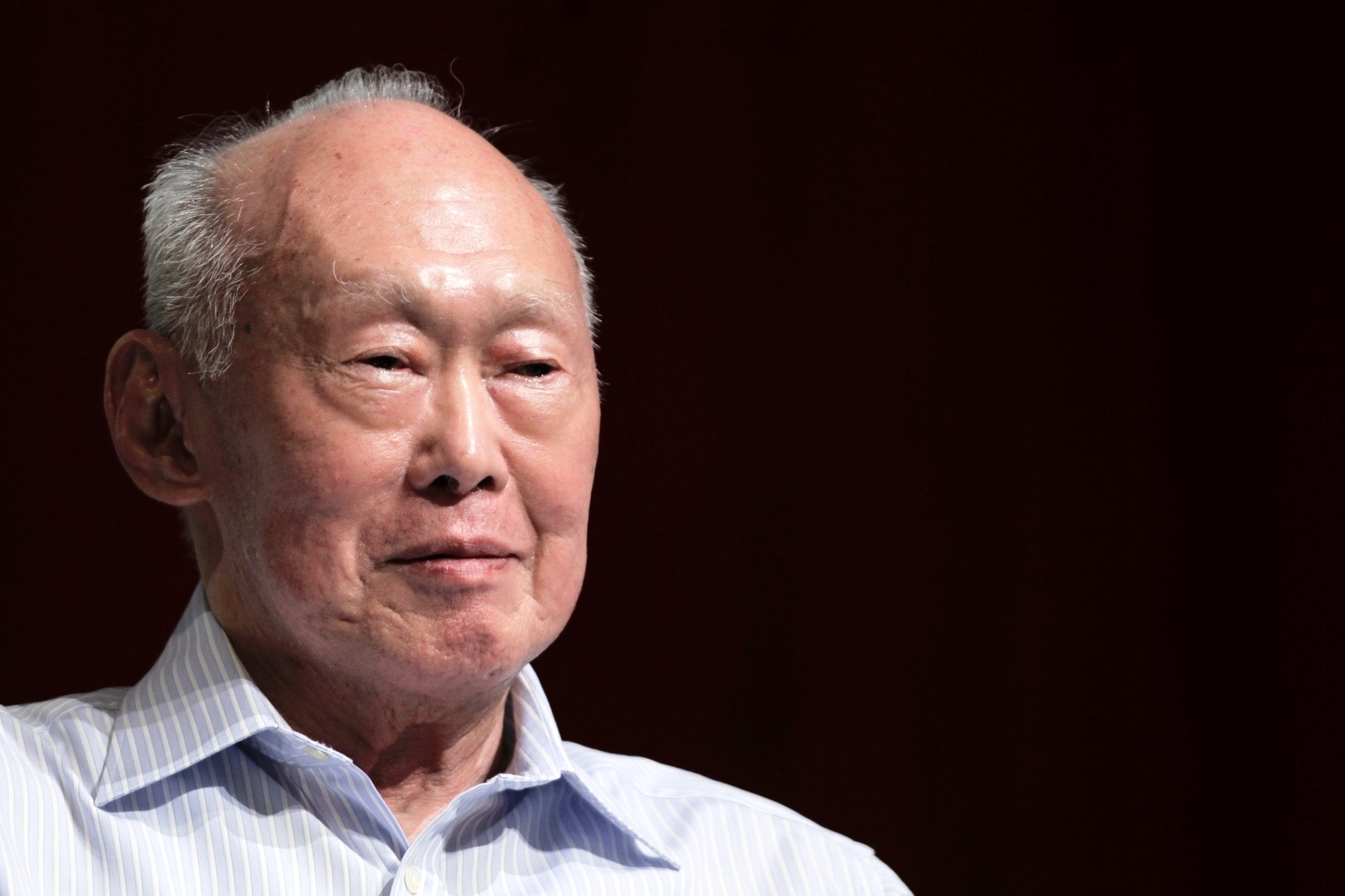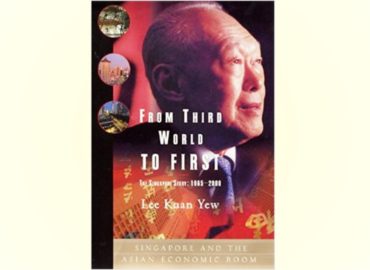CHAPTER 2 :BUILDING AN ARMY FROM SCRATCH
Lee Kuan Yew (LKY) in this chapter gave an insight into yet another teething and grave problem that threatened the survival of Singapore as a new independent nation.
Upon independence and forced exit from the federation with Malaysia, Singapore was now surrounded by hostile neighbours in Malaysia and Indonesia. The colonial master Britain was uncommitted to the continued survival as an independent country on the pretext that it did not want to interfere with the internal problems of Singapore. Other nations once though as “friendly” such as Egypt and India due to their national interests stood aloof to help the new nation. Singapore was thus left with no option than to deftly maneuvered the heavily political minefield to secure the continued independence and survival of the new nation.
Those challenges as captured by LKY are enumerated as follows:
- A section of the Malaysian army had opposed the forced exit of Singapore from the federation and had preferred Singapore to still be part of Malaysia. There was the subterranean desire among some conservatives in Malaysia to force Singapore back into the federation and regain the control of Singapore.
- The successful pro- communist coup in Indonesia in 1965, worsened the uncertainties as Singapore was now faced with two unfriendly neighbours prone to military dictatorship.
- Malaysian army brigade stationed in Singapore had mostly Malays who were born in Malaya ( Malaysia ) and had come to Singapore to enlist, a situation created by the colonial British government. This brigade with such racial composition of the army and police posed a security risk to the new nation as “it could not continue the old British practice of having a city three- quarters Chinese policed and guarded by Malay police and soldiers” The Chinese especially did not trust the army and police to be non-partisan and protect them.
- The three nationalities that made up Singapore namely Malays, Chinese and Indians were suspicious of one another with the Malays feeling that with the support of Malays in Malaysia and the majority in the armed forces they held the ace.
- The army and the police leadership made up mostly Malays have displayed nepotism in handling cases of racial riots, protests and recruitment into the army and police.
Faced with the internal distrust among the races which meant lack of internal stability, the threat from neigbours , LKY identified the need to build quickly a truly national armed forces capable of securing and protecting the territorial integrity of Singapore and her nationals irrespective of race and religion. He set out to achieve this by the taking the following steps:
- He appointed a willing and dedicated defense minister.
- He initiated the move to have the composition of the two Singapore Infantry regiments left by the British and Malaysia be restored to reflect the nationalities in Singapore.
- The Singapore Armed Forces was to be built to discourage intimidation by her neighbours and this has to be done quietly by maintaining non-challenging posture in the process of building the defense capability.
- Re-orientate people’s mind to accept the need for a people’s army and overcome their dislike for soldiering especially among the Chinese.
- Government will enforce law impartially regardless of race and religion to promote confidence in the government and the armed forces.
With the above broad roadmap, LKY and his team went to actualize the roadmap as follows:
- Singaporean government requested India and Egypt to help her develop its military and navy respectively. Both ignored or rather turned down the requests. LKY perceived that India and Egypt declined assistance because India wanted to be neutral while Egypt was cautious about its solidarity with predominantly Muslim Malaysia.
- Singapore turned to Israel to build its armed forces with tact whereby the military collaboration with Israel would be handled from the public glare as much as possible in order not to provoke grassroots antipathy from Muslims Malay in Singapore and Malaysia.
- Singapore also sought the help of Israel to plan its naval buildup while New Zealand trained the sailors for the fast patrol boats.
- Singapore like Israel opted to have small army with large reserve to create the impression on the neighbouring countries that it had the capacity to mobilize a large fighting force at short notice and that “if they could subdue the armed forces, they would have to keep down a whole people well trained in the use of arms and explosives”.
- Singapore promoted interest of the various nationalities ( Chinese, Malays and Indians ) of Singaporean origin to enlist in the armed forces. “Those who enlist in the armed forces as a full-time career would be guaranteed jobs in the government, statutory boards, or the private sector when they left full-time services to go into reserves.”
- National cadet and national police cadets corps were set up in secondary schools. The country went to improve the physical conditions of the youth by getting them to participate in sports, physical activities, adventure that were not without dangers to themselves.
- The army was trained and projected to be seen as the protector of the people and all recruits were to be given equal treatment regardless of their social background.
- The Singaporean Armed Forces (SAF) was made “to attract and retain some of its best talents in the highest echelons of the SAF“. The SAF was also trained to remain subordinated to the “political leadership by keeping important functions such as manpower and finance under civilian officers in the defense ministry”.
- Some of the best officer cadets were sent on scholarships to study at Oxbridge and other universities in Britain for full academic course in humanities, sciences, engineering and other professions. They were made to sign bond to serve for eight years and within this period they would be sent for more courses- first specialist training whether in artillery, armor or signal in Britain or America and finally a course in public or business administration at top American university such as Harvard or Stanford. At the end of the eight year, they could opt to stay in SAF, transfer to public service as administrative officers, top grade civil servants, join statutory board or leave for the private sector.
- Singapore because of its limited economic resources, bought serviceable light tanks and armoured vehicles from Israel who was upgrading its armour at discounted prices.
- Amended the National Service Ordinance earlier passed by the British. The reservists were sent off from their various communities with fanfare to counter the traditional prejudice and over the years broke down the resistance to soldiering.
- SAF in mobilizing the whole society brought in principals, teachers, parents, employers and community leaders to support the network under a concept called “Total Defense” which kept morale high.
By 1990, the Singapore Armed Forces “had grown into a respected and professional force operating modern defence systems that was capable of defending the territorial integrity and independence of the state.”
LESSONS TO BE LEARNT FROM THIS CHAPTER 2
1. When there is a will there is a way. Security is primary to national survival.
2. National interest is paramount to the nation which purposeful leadership must uphold.
3. The government instituted National Service as a way of life that helped to unify the people.
4. LKY now famous proclamation that ” I was determined to make it clear to all in particular to the Chinese now in majority that the government would enforce the law impartially regardless of race or religion.” which he stood for and upheld throughout. LKY belonged to the Chinese majority.
4. LKY used unconventional solutions to solve their national problems such as racial riots, protests, nepotism, sabotage, diplomatic unwillingness among perceived friendly nations to help Singapore.
Notes to be taken
i. Many words and sentences were taken from the book in order to clearly communicate what authors are saying. As much possible most of the borrowed words and sentences are in italics and quotes.
Comments and contributions are welcomed. Chapter 3- Britain Pulls Out is next in our discussion.


